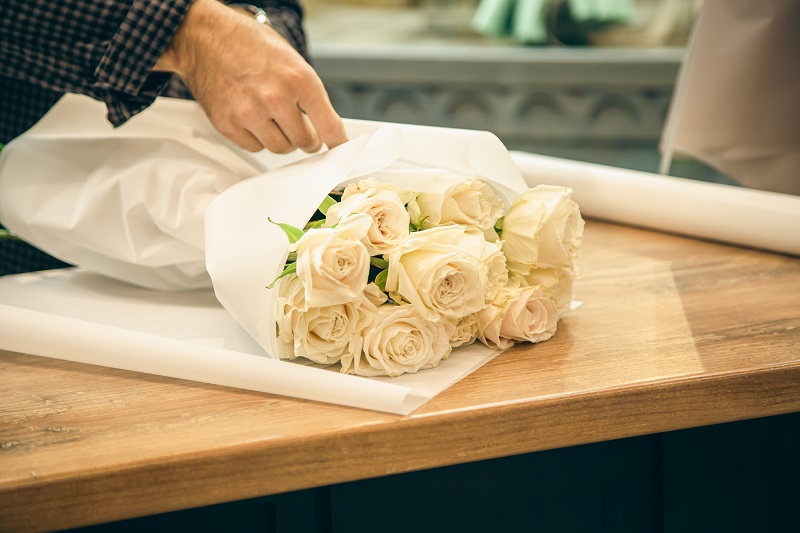
How often have we been saved by fresh blooms as the perfect last-minute gift or as a timeless gesture of love? How many times have we relied on their gentle elegance to add charm to our living spaces?
But have we ever paused to consider the careful artistry that goes behind choosing the right bouquet or creating the perfect floral arrangement?
This piece delves deep into the transformative world of modern floristry, exploring how this sweet-smelling industry has bloomed over time.
Just as every petal adds layers of meaning to a flower, different dimensions define the ever-evolving niche of floristry. Throughout this piece, we’ll explore the facets and fronds of this industry, from its progression to its modern use in home decor.
We’ll mull over historical influences, and touch on how botanical aesthetics have shifted with the changing times.
Spanning from European elegance to Oriental minimalism, the trajectory of floristry has seen prominent cultural impacts, provoking us to ponder- where is it heading now?
Equally riveting is its trade aspect, bouncing back against all adversities to continually thrive.
We will be examining these aspects and more, in this extensive exploration of the enchanting world of floristry.
Roots of Floristry: A Brief Historical Look
Dipping into history, we find our first traces of floristry with the Egyptians. Ancient Egypt’s love affair with flowers is well-documented in various frescoes, where they are generously used in religious rituals and as decorative elements in homes.
Only a select few varieties were cultivated, but the careful arrangement points to an early understanding of the value of aesthetics.
Moving along the timeline, we touch upon the Roman and Greek empires, where wreaths and flower crowns were popular and used symbolically.
Europe, particularly during the Victorian era, saw the explosion of floristry as a profession, aligning with their infatuation with nature and gardens.
Fast forward to the 21st century. Here we find floristry undergoing a major shift in terms of design, technique, and accessibility, prompted by increased globalization and consequently, the melding of cultures.

Florist
Cultivating Aesthetics: The Art in Floristry
The art of floristry is a delicate process, requiring mastery over design principles, color theory, and a profound understanding of the natural characteristics of flowers.
Beyond just arranging various blooms, it’s about balancing textures, forms, and colors in cohesive bouquets that please the eye and soul.
Japanese Ikebana, for instance, is a meditative art that seeks to find harmony and balance in minimalism. European trends, on the other hand, generally Favor lush, overflowing arrangements that make a grand statement.
Modern trends are seeing a blend of these styles, along with innovative use of colors and non-floral elements.
Floristry as a Lucrative Trade
As people have developed a palate for designer bouquets and unique arrangements, floristry has found a secure footing as a lucrative trade.
From mom-and-pop florists operating out of small brick-and-mortar stores to worldwide brands dominating the digital landscape, the industry has bloomed into a billion-dollar sector.
Floristry and Its Sociocultural Impacts
Just as it absorbs from the culture, floristry also contributes to it. Flowers are an integral part of our societal fabric and continue to serve roles far beyond that of just beautification.
Be it for mourning the loss of a loved one, expressing romantic feelings, or marking achievements, flowers offer a uniquely tender gesture.
Challenges Faced by the Floristry Industry
Like any other, the floristry industry has its challenges too. Economic downturns, climate changes, competition from supermarkets, sourcing flowers, and now, the COVID-19 pandemic- various advantages and disadvantages are intertwined within this profession. Yet, resilient as the industry is, it continues to thrive, adapt, and grow.
Modern Floristry: The Future of Floral Design
Looking forward, the future of floristry appears fascinating. Sustainability is gaining momentum, as is the notion of locally sourced, seasonal flowers.
An exciting time indeed for this continuously evolving sector, with innovative techniques, technologies, and fresher approaches waiting to blossom on the horizon.
Conclusion: The Perennial Allure of Floristry
Floristry, with its roots deeply embedded in human civilization, has weathered time’s tumultuous tide, always coming through stronger and more vibrant. Its fascinating history, cultural impacts, art and aesthetics, and the industry’s resilient strength are testaments to the timeless allure of flowers.
Flowers are more than an object of admiration; they’re a celebration of life. This is quite evident in the dynamic world of floristry, where every creation is an artistic tribute to beauty and emotions.
It’s an ever-evolving, deeply enticing world, and we’re excited about the new advancements it will explore in the future.
The promise of floristry lies in its grace to adapt, innovate, and flourish, breathing new life into the petals of our existence. Here’s to celebrating the soft-powered revolution of flowers, one bloom at a time.
